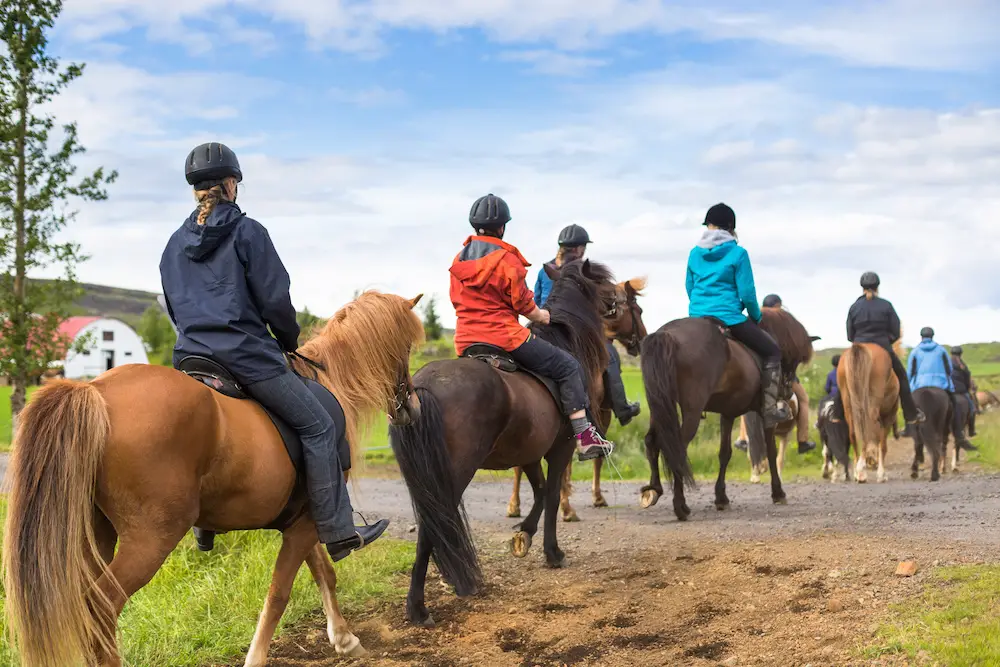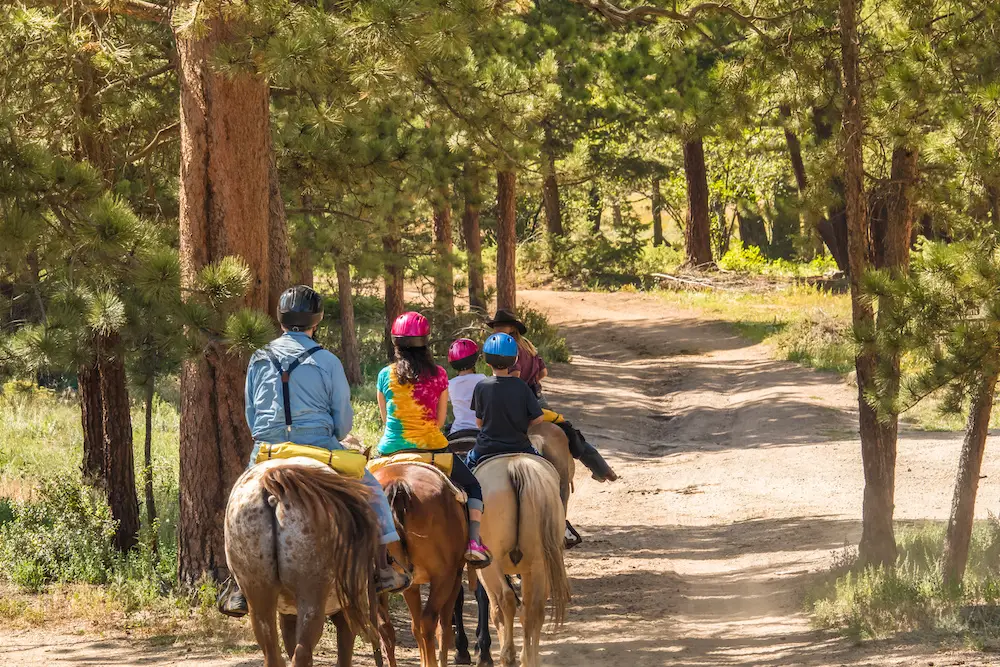Because of their numerous well-known benefits, are bike helmets safe for horseback riding?
It’s not surprising for newbies to ask this question.
After all, if you already own a helmet for biking, is there really a need to buy one exclusively for horseback?
In reality, they may not be ideal.
Let’s get into all of the reasons why you should always match your helmet to the activity.
Are Bike Helmets Safe for Horseback Riding?
It’s important to remember that every type of PPE (Personal Protective Equipment) is designed for specific activities.
Special gloves are made to handle certain chemicals, much like specific helmets are for particular activities.
Even though bike helmets are generally safe for bike-related activities, they don’t protect you from the unique hazards of horseback riding.
Bike helmets encompass a particular portion of your head, notably the top and a little bit of the sides above your ears.
This design is essential because if you were to fall off your bike, those are the areas of your head most at risk.
There are multiple factors considered when determining the safety of bike helmets, such as the height of the bike and the speed of travel.
These same considerations are used when designing horseback riding helmets.
Manufacturers consider the potential fall height, the speed of travel, and the direction in which you could hit your head.
As a result, you’ll find that a horseback riding helmet is far more encompassing than a bike helmet.
Bike vs Horseback Riding Helmets
To give you a more in-depth look at how one differs from the other, here’s where a bike helmet compares to a horseback riding helmet:
Shape
The central objective of bike riding is to allow riders to move effortlessly and freely.
You’ll find bike helmets often have a sleeker, more streamlined design that adds to their aerodynamics.
On the other hand, speed isn’t the only consideration for horseback riding.
Horseback riding helmets have a more rounded design that focuses primarily on encapsulating the skull.
This design is less about aerodynamics and more about preventing blunt force trauma from potential falls.
Coverage
Another massive area where these two types of helmets differ is the total surface area they cover.
When wearing a bike helmet, you’ll find that the front and top of your head are protected the most.
In addition, the back and sides have more breathing room, allowing for optimal airflow.
On the other hand, horseback riding helmets have more protection encompassing the entirety of your head.
You’ll find that the shell covers most of the skull base as well as the sides and front of the forehead.
This coverage is necessary because it’s challenging to predict how a rider could fall or be thrown off a horse.
Fall Height
The most considerable difference between bike helmets and horseback riding helmets has to do with height.
As mentioned, manufacturers will design head protection based on the heights you could fall from.
On a bike, you’re only a few feet off the ground, while on a horse, you could fall from eight or more feet up.
These helmets protect you from a fall and what could happen if you were to land on the ground.
Also, the thickness and durability of horseback riding helmets are specifically designed to protect the rider from hoof strikes.
When on the ground, the rider must be protected against any accidental or purposeful movements by the horse.

What Makes Horseback Riding Helmets Unique?
Now that you have a general idea of how horseback riding and bike helmets differ, let’s explore what makes equestrian designs unique.
Several key components make them the best option for horseback riding, such as:
Terrain Accommodations
Did you know that helmet manufacturers have to think about terrain when designing helmets?
This reason is why the majority of horseback riding helmets have a sleek, slick exterior.
If you were to fall, the helmet would skid across the rough terrain rather than stick to it, which can result in neck injuries.
Whether you’re riding on a rocky or muddy trail, your helmet will be specifically designed for these applications.
This difference is particularly notable compared to bike helmets designed for asphalt and other road-like terrains.
Impact Absorption
Like we discussed earlier, horseback riding helmets are able to withstand blunt force trauma.
What makes them unique is that they can also protect the rider from sharp and obtrusive objects.
This design element is also affected by terrain, as riders can be near jagged, rough rocks or smooth, hard surfaces.
Balanced Weight
When riding a horse, one of the most important things to master is your balance.
Without it, you won’t be able to maintain control of the horse or sit firmly on your saddle pad.
Equestrian helmets are unique in that they secure your head perfectly without being too heavy.
In fact, when appropriately fastened, your helmet will feel like an extension of your head.
Because of this, it won’t shift around when you gallop or trot, nor will it interfere with your eyesight.
How To Choose a Safe Helmet for Horseback Riding
Knowing the importance of matching your helmet to the activity can make it much simpler to find the ideal model.
It’s common for experienced horseback riders to forego helmets in place of experience, which can be incredibly dangerous.
Instead, we recommend that you find a safe and comfortable helmet to protect you from serious injury.
Let’s look at some essential factors to consider when you start shopping around.
Helmet Certification
A sure-fire way to ensure you’re investing your money in a safe and quality helmet is to look at their certifications.
Approved horseback riding helmets have been certified by the Safety Equipment Institute (SEI) or the American Society for Testing and Material (ASTM).
Both of these organizations put products through strenuous tests to determine their efficacy in preventing severe injuries.
Proper Sizing
You’ll want to make sure your helmet is comfortable to wear, which will make you more likely to wear it at all times.
Also, a properly sized helmet ensures that your entire head has protection in the event of an accident.
A general rule of thumb is to make sure they fit snugly and securely without being too tight.
The helmet’s brim should rest one inch above your eyebrows, and it shouldn’t tilt when you move your head.
A great way to test the fit is to shake your head and see if the helmet shifts around.
If it does, consider a smaller size or make the adjustments slightly tighter.
Padding
When looking at the product descriptions for different horseback riding helmets, always consider the padding.
Padding inside of helmets is what absorbs the impact from a fall. Instead of denting your skull, the padding will get dented within the shell.
The higher the quality of the padding, the more protection you’ll have.
It’s also essential to ensure it’s breathable to help keep you comfortable for hours of riding.
Match It to the Activity
So, are bike helmets safe for horseback riding?
If you’re wondering the same thing, keep in mind that it’s best to match the helmet to the activity.
With their unique design, horseback riding helmets protect you from possible horse-related injuries.
In comparison, bike helmets are primarily designed for bike-related excursions.

